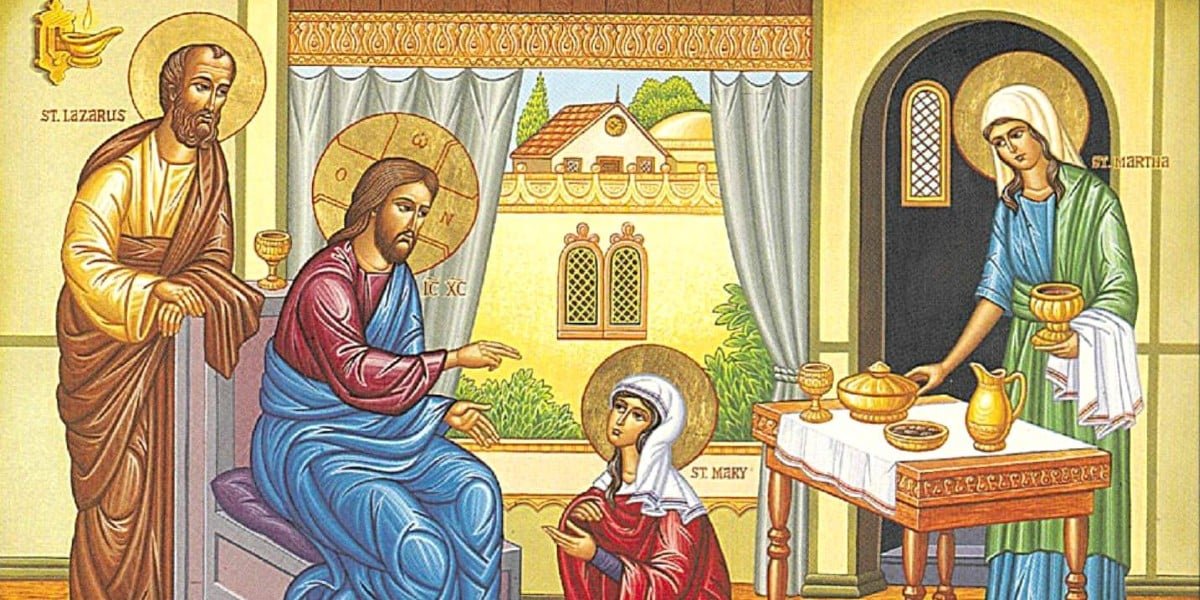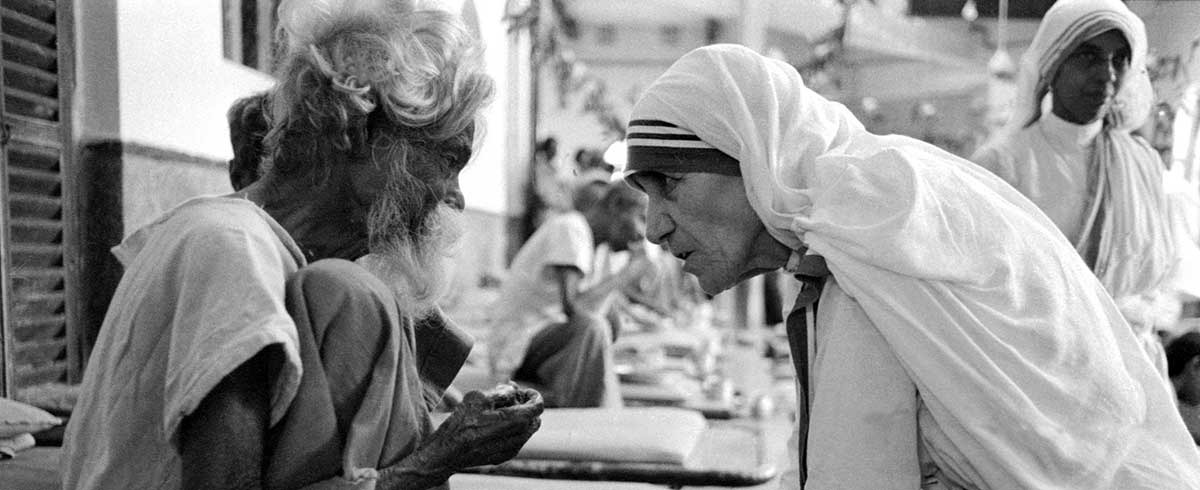Sacred Rhythms: Blending Action and Contemplation through Martha and Mary
In this reflective article, I explore the timeless Gospel story of Martha and Mary (Luke 10:38-42) to uncover a deeper spiritual lesson about the balance between active service and contemplative presence. While Martha is busy serving and Mary sits at the feet of Jesus, we are invited to consider how both action and contemplation are essential to a mature and integrated Christian life.
Rev. Binu Rathappillil
7/26/20256 min read


Sacred Rhythms: Blending Action and Contemplation through Martha and Mary
In Christian spiritual tradition, the dichotomy between action and contemplation has long been represented by the figures of Martha and Mary, the two sisters featured in the Gospel of Luke. In this familiar Gospel, Martha is preoccupied with preparing and serving, while Mary sits at Jesus’ feet, listening to His words. The typical interpretation favors Mary’s contemplative stillness, seeing it as superior to Martha’s active service. However, Meister Eckhart, the medieval German mystic, offers a radical reinterpretation of this narrative in his sermon. Through a subtle and profound analysis, Eckhart challenges the conventional wisdom and suggests that both Martha and Mary represent essential, intertwined aspects of spiritual maturity. Eckhart’s sermon invites readers to transcend the binary view of action versus contemplation and to recognize the potential for the divine presence in both, leading to a spirituality of balance, inner detachment, and profound unity with God.
1. Mary’s Contemplation: Longing for Divine Love
Mary, who sits quietly at Jesus’ feet, embodies the heart’s longing for God and the receptive spirit that welcomes divine love. Three forces drew her into this moment of deep communion. The first was God’s goodness, which embraced her soul and opened her heart. Psalm 42:1 reflects her longing, “As the deer pants for streams of water, so my soul pants for you, my God.” Mary’s stillness reveals a heart that thirsts for God’s presence and trusts in His goodness. The second force was an ineffable longing, an unnamable desire for something beyond this world. It’s a longing for the eternal, for the mystery that God places within each of us—a desire that reaches beyond our understanding. This longing echoes the psalmist’s cry, “One thing I ask from the Lord, this only do I seek: that I may dwell in the house of the Lord all the days of my life” (Psalm 27:4). Mary’s heart reflects this desire, revealing a yearning for divine union. The third was the “sweet consolation and delight” she drew from Christ’s words. In this moment, Mary is absorbed in the living Word, tasting the richness of divine truth. Like Jesus says in Matthew 4:4, “Man shall not live by bread alone, but by every word that proceeds from the mouth of God.” Mary’s contemplation is not passive but is an active reception of Christ’s life-giving presence, bringing her into a profound experience of God’s love.
2. Martha’s Action: Service at God’s Presence
While Mary receives the gift of presence, Martha exemplifies the gift of service. Three qualities inspired her to serve Christ with wholehearted devotion, and these qualities reveal the rich spirituality within active ministry. The first was her respected age and wealth of experience. Martha knew the need for hospitality and took it upon herself to ensure that her guest was well cared for. Her actions speak to a seasoned love, a love that expresses itself through care for others. This type of love is reflected in Galatians 5:13, where Paul urges, “Serve one another humbly in love.” Martha’s service is her love in action, and it reveals her respect for the sacred duty of caring for those God places in her life. The second quality was her mature reflection, a wisdom that enabled her to handle external work with the dedication and perfection love demands. Martha’s hands were busy, but her work was more than an activity; it was purposeful, rooted in her love and dedication to Christ. Colossians 3:23 exhorts, “Whatever you do, work at it with all your heart, as working for the Lord.” This spirit of intentional service sanctifies Martha’s work, lifting it into an expression of worship. The third force was her reverence for the dignity of her guest. Martha’s respect for Jesus moved her to serve Him with her best effort. As Proverbs 3:9 says, “Honor the Lord with your wealth, with the first fruits of all your crops.” For Martha, offering her best was a way of honoring Christ’s divine presence, making her service an offering of love.
3. Redefining the Active and Contemplative Lives
For centuries, Mary’s contemplative nature was seen as “choosing the better part,” while Martha’s busyness with household tasks was viewed as a distraction from divine communion. Martha, who is often relegated to a lesser spiritual status, may actually represent a deeper form of spiritual maturity. Martha's active engagement is not a lesser path, but one that can lead to union with God, provided it is undertaken with a heart detached from worldly concerns. The external, active life and the internal, contemplative life are not oppositional forces but are deeply interwoven. True spirituality is not found in retreating from the world but in bringing divine presence into everyday action. This approach emphasizes that one does not have to choose between activity and contemplation; instead, a mature spirituality integrates the two harmoniously. Martha’s role becomes a powerful symbol of the active life transformed by divine awareness.
4. The Power of Inner Detachment
A core theme in the teaching of Martha and Mary centers on the concept of inner detachment. Authentic spirituality requires a person to relinquish attachment to self-centered desires, allowing them to act freely without being bound by ego. This detachment does not require physical withdrawal from the world, as Mary’s quiet presence might imply, but calls for a deeper state of mind. Martha is not less spiritual because she is active; rather, her spiritual maturity hinges on whether her actions stem from a place of inner detachment and selfless love. In other words, it is not the activity itself but the intention and spiritual disposition behind it that matters. If Martha serves with a detached heart, she is just as close to God as Mary is in her stillness. This insight reframes action not as a potential distraction from God but as a sacred expression of divine love when performed with a pure heart.
5. Finding God in All Things
One of the most distinctive insights is that God can be found in every aspect of life, not just within the confines of silent prayer or contemplative practices. Our new understanding of Martha and Mary’s story pushes against the idea that the divine is confined to moments of quietude or separated from the physical and mundane. Instead, encourages listeners to see God in all things and to let that awareness permeate every action. Martha and Mary do not represent competing paths; rather, they embody a single journey toward unity with God, where both action and contemplation become sacred. It suggests that the external life of action can be equally infused with divine presence as the internal life of contemplation. The modern lesson here is clear: one need not retreat from everyday life to experience the presence of God; instead, all activities can become opportunities for communion with the divine, provided they are approached with a spirit of love and detachment.
6. Unity with God through Action and Contemplation
This Gospel presents the ultimate spiritual archetype as a harmonious union of action and contemplation, a state where the soul reaches a profound oneness with God that transforms every aspect of existence. When Martha serves and Mary listens, we see them not as figures on separate paths but as representations of the soul’s unified movement toward God. True union with God allows a person to be fully present in both action and contemplation without feeling divided or constrained by either. This state of unity becomes possible when the soul is no longer seeking something external but is grounded in the inner awareness of God’s presence. Martha’s example shows that when action flows from a place of inner stillness and detachment, it becomes an expression of divine love. In this way, a person can live out their calling, perform their duties, and engage with the world, all while experiencing a deep, unbroken communion with God.
7. The Relevance of Teaching Today
The vision of integrating action and contemplation resonates strongly in today’s world, where people often feel caught between the pressures of daily obligations and the desire for inner peace. Gospel teachings challenge the assumption that spirituality requires a life separated from the world’s demands and instead encourage a spirituality that can be lived fully in the midst of one’s responsibilities. A truly mature spiritual life does not demand a choice between action and contemplation; rather, it cultivates both in harmony. In doing so, it finds God not only in moments of silent reflection but also in the everyday tasks and interactions that make up the fabric of life. By embracing both Martha’s activity and Mary’s contemplation, modern believers can cultivate a spirituality that is both grounded in divine presence and actively engaged with the world around them.
8. Conclusion
Martha and Mary remain a compelling call to reimagine what it means to live a spiritual life. By appreciating Martha’s active engagement equally with Mary’s contemplative stillness, the Gospel invites readers to embrace a spirituality that transcends dualistic thinking. This Gospel offers a pathway to a life where action becomes a form of prayer and contemplation becomes an active engagement with the divine, transforming every aspect of existence into a reflection of divine love and purpose. When we embrace a spirituality of action and contemplation, we experience the richness of God’s presence, not only in quiet moments of prayer but in every act of love we offer. Through this balance, we are drawn closer to God, allowing His love to transform both our inner and outer lives. As we journey forward, may we seek the better part, not in one path or the other, but in a wholehearted life of love rooted in His Word and lived in His service.



